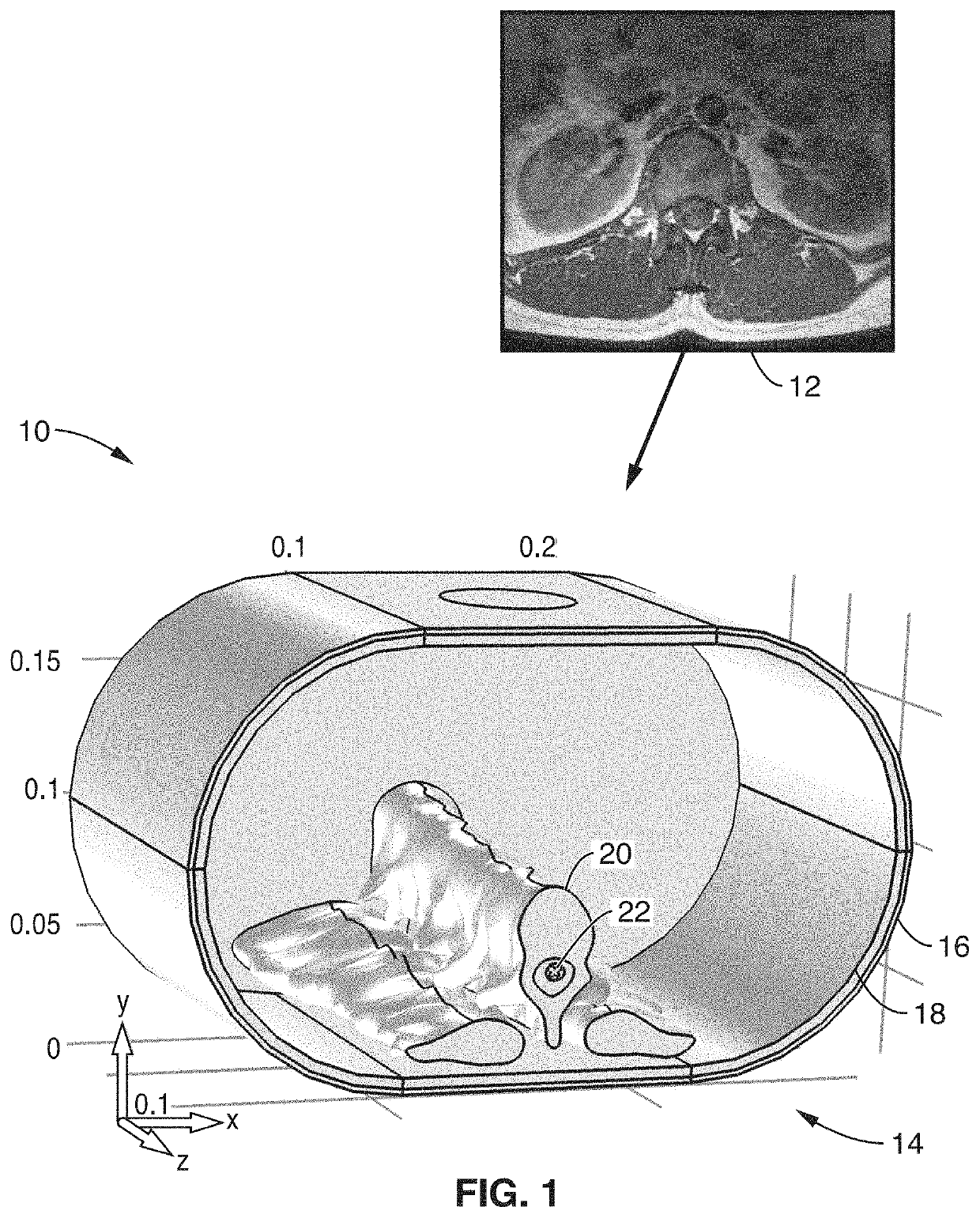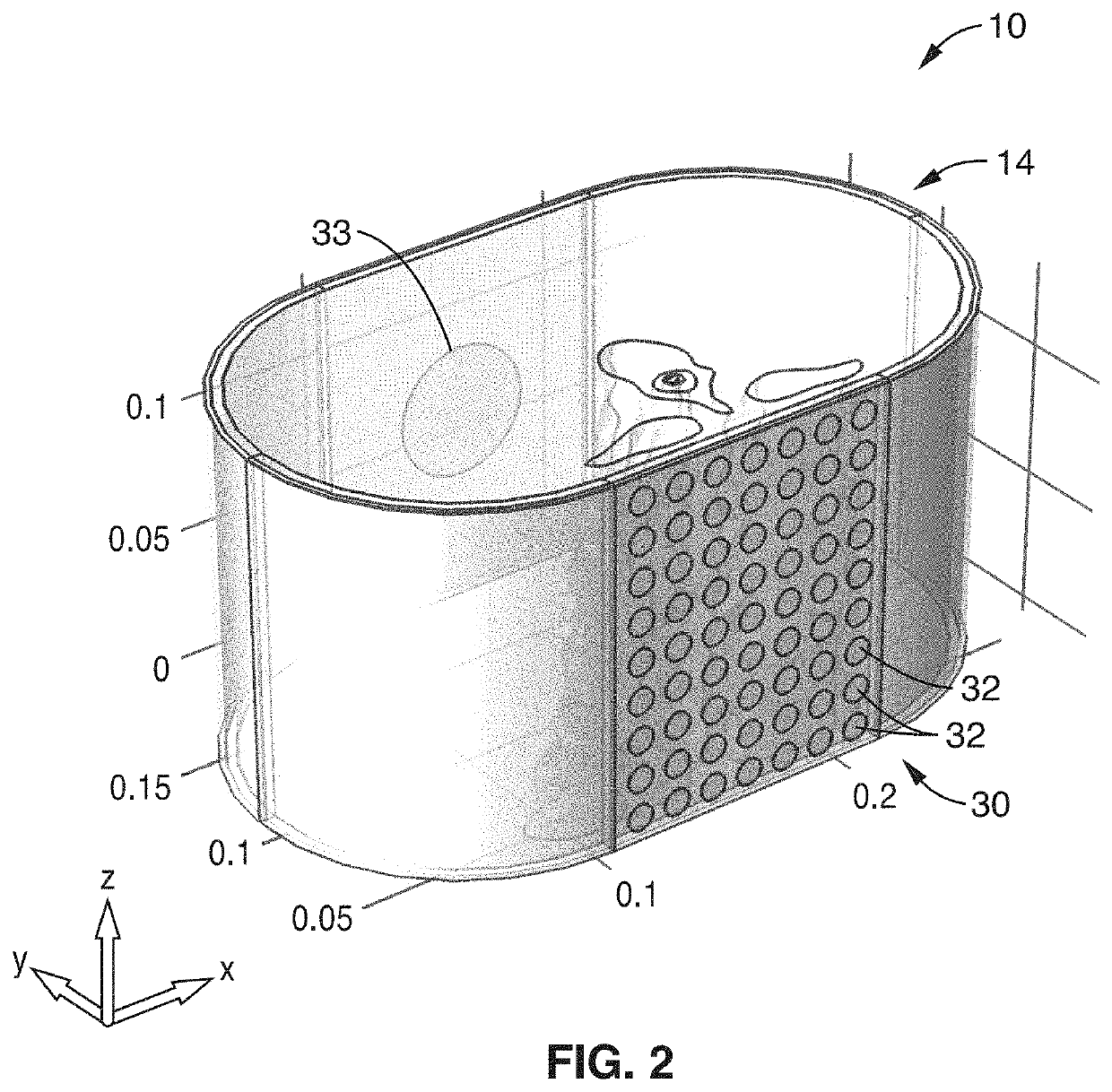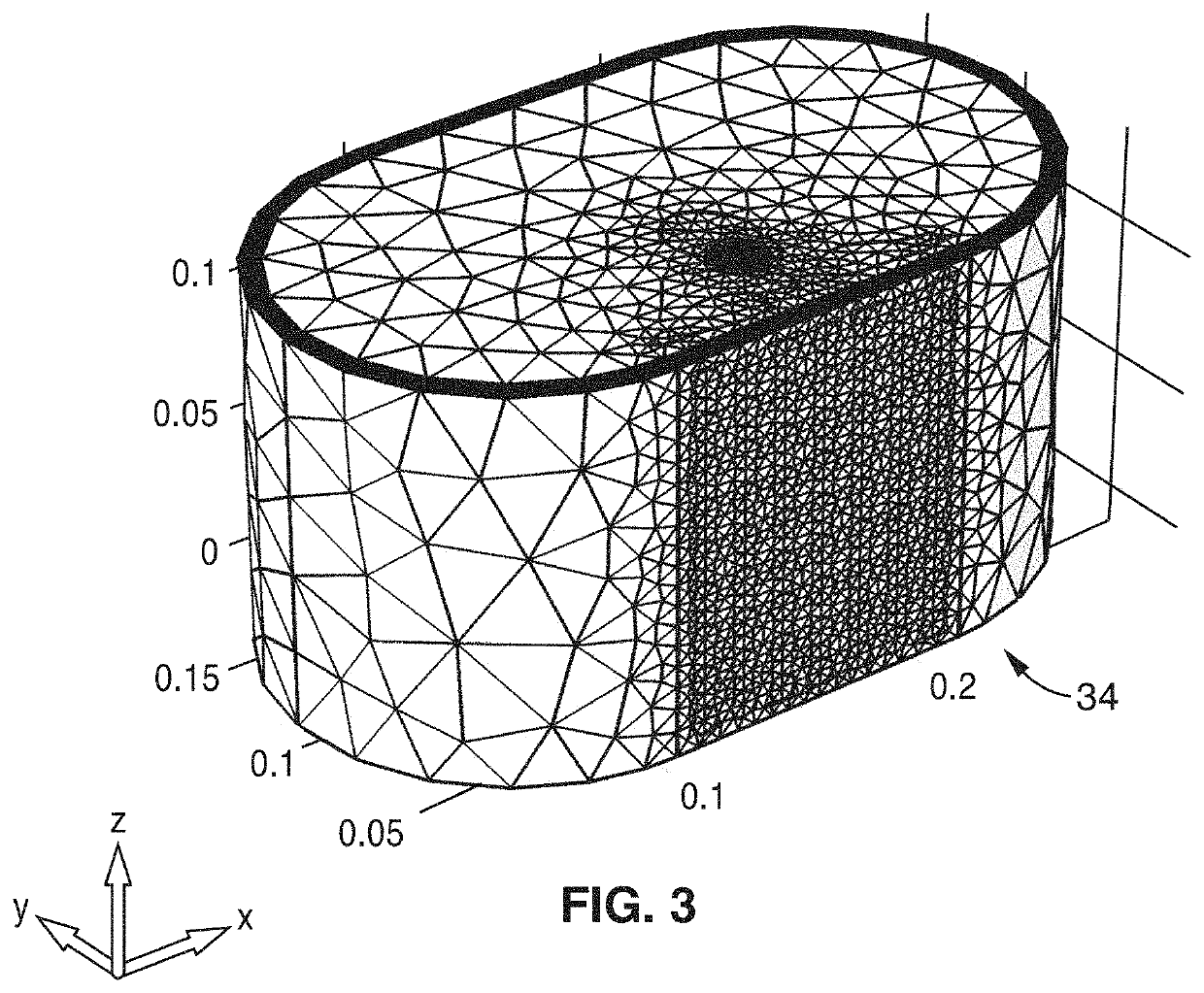Optimal multi-electrode transcutaneous stimulation with high focality and intensity
- Summary
- Abstract
- Description
- Claims
- Application Information
AI Technical Summary
Benefits of technology
Problems solved by technology
Method used
Image
Examples
Embodiment Construction
[0047]The key challenges for noninvasive transcutaneous spinal cord stimulation and transcranial current stimulation lie in the ability to provide high spatial and temporal resolution, with a high degree of focal accuracy, while using the correct intensity and directionality using external current injection though an electrode on the skin.
[0048]To accommodate the above mentioned challenges, a multi-electrode system is described below. The multi-electrode system of the present technology includes novel hardware, software, algorithms, and user interface that enable an experiment methodology and development of clinical protocols by (1) a computational 3D model based on MRI / CT data to facilitate the treatment, efficacy, and safety of the device; (2) a novel source localization algorithm to obtain precise target localization and focal precision; (3) optimal stimulation patterns with desired intensity guided by a novel source localization algorithm; (4) miniaturized and fully integrated h...
PUM
 Login to View More
Login to View More Abstract
Description
Claims
Application Information
 Login to View More
Login to View More - R&D
- Intellectual Property
- Life Sciences
- Materials
- Tech Scout
- Unparalleled Data Quality
- Higher Quality Content
- 60% Fewer Hallucinations
Browse by: Latest US Patents, China's latest patents, Technical Efficacy Thesaurus, Application Domain, Technology Topic, Popular Technical Reports.
© 2025 PatSnap. All rights reserved.Legal|Privacy policy|Modern Slavery Act Transparency Statement|Sitemap|About US| Contact US: help@patsnap.com



